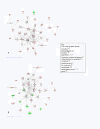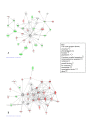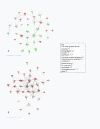Global gene expression patterns in the post-pneumonectomy lung of adult mice
- PMID: 19804646
- PMCID: PMC2770038
- DOI: 10.1186/1465-9921-10-92
Global gene expression patterns in the post-pneumonectomy lung of adult mice
Abstract
Background: Adult mice have a remarkable capacity to regenerate functional alveoli following either lung resection or injury that exceeds the regenerative capacity observed in larger adult mammals. The molecular basis for this unique capability in mice is largely unknown. We examined the transcriptomic responses to single lung pneumonectomy in adult mice in order to elucidate prospective molecular signaling mechanisms used in this species during lung regeneration.
Methods: Unilateral left pneumonectomy or sham thoracotomy was performed under general anesthesia (n = 8 mice per group for each of the four time points). Total RNA was isolated from the remaining lung tissue at four time points post-surgery (6 hours, 1 day, 3 days, 7 days) and analyzed using microarray technology.
Results: The observed transcriptomic patterns revealed mesenchymal cell signaling, including up-regulation of genes previously associated with activated fibroblasts (Tnfrsf12a, Tnc, Eln, Col3A1), as well as modulation of Igf1-mediated signaling. The data set also revealed early down-regulation of pro-inflammatory cytokine transcripts and up-regulation of genes involved in T cell development/function, but few similarities to transcriptomic patterns observed during embryonic or post-natal lung development. Immunohistochemical analysis suggests that early fibroblast but not myofibroblast proliferation is important during lung regeneration and may explain the preponderance of mesenchymal-associated genes that are over-expressed in this model. This again appears to differ from embryonic alveologenesis.
Conclusion: These data suggest that modulation of mesenchymal cell transcriptome patterns and proliferation of S100A4 positive mesenchymal cells, as well as modulation of pro-inflammatory transcriptome patterns, are important during post-pneumonectomy lung regeneration in adult mice.
Figures








References
-
- Snider GL, Kleinerman JL, Thurlbeck WM, Bengali ZH. The definition of emphysema. Report of a National Heart, Lung, and Blood Institute, Division of Lung Diseases workshop. Am Rev Respir Dis. 1985;132:182–185. - PubMed
-
- Laros CD, Westermann CJ. Dilatation, compensatory growth, or both after pneumonectomy during childhood and adolescence. A thirty-year follow-up study. J Thorac Cardiovasc Surg. 1987;93:570–576. - PubMed
-
- Brody JS, Burki R, Kaplan N. Deoxyribonucleic acid synthesis in lung cells during compensatory lung growth after pneumonectomy. Am Rev Respir Dis. 1978;117:307–316. - PubMed
Publication types
MeSH terms
Substances
Grants and funding
LinkOut - more resources
Full Text Sources
Molecular Biology Databases
Research Materials
Miscellaneous

